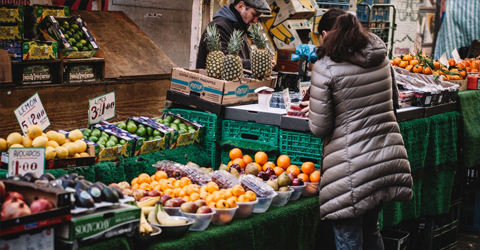

Although only ten GMO (genetically modified organisms) crops are commercially available in the US—corn, soybeans, cotton, canola, alfalfa, sugar beets, papaya, squash, potatoes, and apples—they contribute massively to the total food supply. This is most evident in the processed food industry, in which up to three-fourths of all foods contain GMO ingredients.
Still, in spite of the widespread use of GMOs, legislative efforts to mandate their uniform labeling have faced tremendous opposition. Perhaps the best example of that opposition is the $45 million contributed by giants of food and agribusiness such as Monsanto, PepsiCo, and Kraft to defeat California’s Proposition 37 in 2012, which would have mandated GMO labeling throughout the state.
Look for foods verified as GMO-free. The two most common verification programs are the Non-GMO Project and GMO Guard.
Since then, only a couple states have successfully passed labeling laws. On the federal level, a bipartisan bill introduced by Senators Pat Roberts and Debbie Stabenow in 2016 has given the USDA (United States Department of Agriculture) until 2020 to implement a uniform label for GMO foods. However, that bill is far from perfect. Many critics have protested that it allows for too many loopholes, and especially that food processors will be able to display a QR code instead of a clear, written label.
But even though change in this area has been slow and frustrating, there are many ways you can choose to avoid GMO foods. Here are some tips to help you reclaim control and navigate the store on your own terms.
1. Look for the USDA Organic Seal. Organic foods are strictly certified and not allowed to contain GMO ingredients.
2. Look for foods verified as GMO-free. The two most common verification programs are the Non-GMO Project and GMO Guard.
3. Avoid buying processed foods. Most processed foods contain GMOs.
4. Eats lots of fresh and frozen produce. With the exception of corn, beets, zucchini, summer squash, radicchio and Hawaiian papaya, most produce is GMO-free.
5. Try dried grains, beans, nuts and seeds, except for corn and soy.
6. Research and purchase imported food products—many countries prohibit the cultivation of GMO crops.
7. Grow your own food using non-GMO seeds.
8. Buy from a local farmers’ market or farm. If you’re not sure, ask whether they use GMO seeds or products on their farms.
By now, you may have heard interesting arguments from both sides of the GMO debate. But no matter what side you support, it is ultimately your decision to make. And until the regulatory environment is strong enough to ensure transparency and greater access to information, you must empower yourself. Thankfully, there are many places to start. With these tips, you should soon be on your way toward a more confident, easy, and informed shopping experience.
Additional Resources:
Copyright 2024 Center for Nutrition Studies. All rights reserved.
Earn Your Plant-Based Nutrition Certificate
Join over 20,000 students who have improved their health, learned new skills, and even inspired career changes.
Program Overview
- 23,000+ students
- 100% online, learn at your own pace
- No prerequisites
- Continuing education credits




